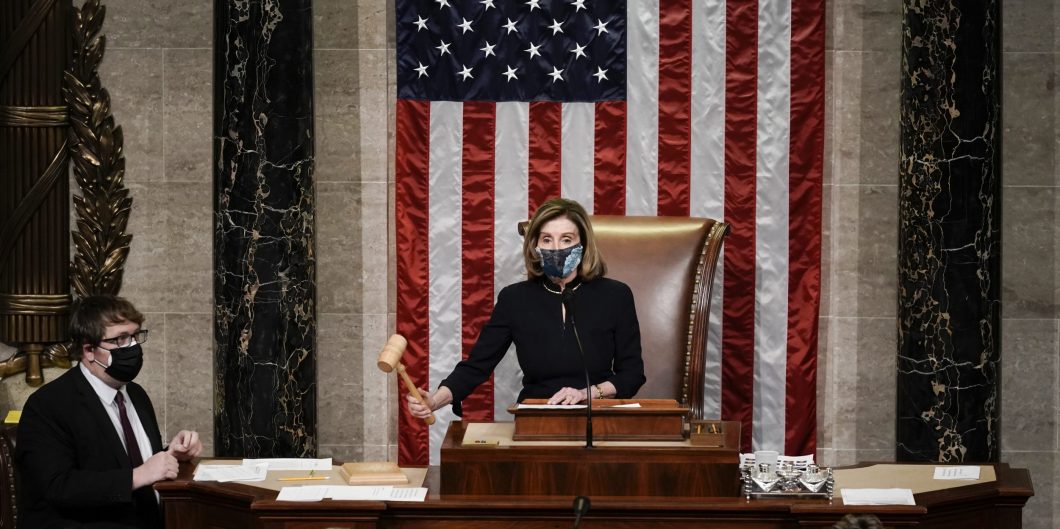This sorry mess should serve as a cautionary tale to those Americans who have always admired the British parliamentary system, to which Canada is an heir.
Impeachment After Leaving Office
Some legal analysts argue that a president’s impeachment cannot constitutionally continue after the end of the president’s term. (Former Federal Appellate Judge J. Michael Luttig argues it here, law professors Bruce Ackerman and Gerard Magliocca advance the claim here.) The main reason supporting the claim is straight forward: Impeachment is a means to remove a president prior to the next election. Once the president’s term has ended, the raison d’être for impeachment has therefore also ended. Confounding this understanding of impeachment, however, two early state constitutions actually limited impeachments to the time after the chief executive’s term had ended; these states did not permit impeachment of a sitting governor. Additionally, a decision by the Texas Supreme Court in a case of a gubernatorial impeachment provides a practical reason why impeachments cannot be limited to sitting executives.
Consider first the impeachment of Texas Governor James E. Ferguson in 1917. Ferguson resigned the governorship prior to his conviction by the Senate, so he was not a sitting governor when the Texas Senate convicted him in its impeachment trial. He subsequently sought to run again for governor in 1924. The Texas Supreme Court held that Ferguson’s impeachment actually occurred despite the fact that Ferguson had resigned his office prior to his conviction by the Senate.
The Texas Constitution, like the U.S. Constitution, does not limit the judgment from an impeachment to removal from office. Section IV of Article XV of the Texas Constitutions provides that “Judgment in cases of impeachment shall extend only to removal from office, and disqualification from holding any office of honor, trust or profit under this State.” This language almost exactly parallels the language of Article 1, Section 3 of the U.S. Constitution. Both constitutions allow a future disability, disqualification to hold office in the future, as part of the outcome of an impeachment.
Despite the Senate’s conviction, Ferguson sought to run for governor again in 1924. Against a lawsuit filed to prevent the Texas Democratic Party from listing him on the primary ballot, Ferguson argued that his impeachment trial ended without a conviction or judgment because he resigned his office before the Senate decided the case.
In its decision in Ferguson v. Maddox, the Texas Supreme Court gave short shrift to Ferguson’s argument:
If the Senate only had power to remove from office, it might be said, with some show of reason, that it should not have proceeded further when the Governor, by anticipation performed, as it were, its impending judgment. But under the Constitution the Senate may not only remove the offending official, — it may disqualify him from holding further office, and with relation to this latter matter, his resignation is wholly immaterial. For their protection the people should have the right to remove from public office an unfaithful official. It is equally necessary for their protection that the offender should be denied an opportunity to sin against them a second time. The purpose of the constitutional provision may not be thwarted by an eleventh hour resignation.
The reasoning applies to impeachments under the U.S. Constitution. If a president believes he or she will be convicted by the Senate, and perhaps entertains the hope of running for president or some other national office again, the president could avoid disqualification from future office holding merely by resigning before a Senate conviction.
The possibility of manipulation aside if impeachment is limited to an official’s term of office, at least two early state constitutions did not even allow impeachment of a sitting state executive; impeachments could occur only after the chief executive left office.
The Ferguson case also demonstrates that the possibility an impeached official could again run successfully for office is not too farfetched. James Ferguson proved so popular that when he was unable to run again for governor in 1924 his wife—“Ma Ferguson”—ran in his stead, and was elected. Ma Ferguson did not have a separate political identity. She ran as the substitute for “Pa” Ferguson. Popular support for “Pa” was, apparently, sufficiently great that he could have been re-elected in his own right despite his earlier impeachment.
The possibility of strategic manipulation aside if impeachment is limited to an official’s term of office, at least two early state constitutions did not even allow impeachment of a sitting state executive; impeachments could occur only after the chief executive left office.
The Virginia Constitution of 1776—a particularly important and well-known example to the national founders—provides:
The Governor, when he is out of office, and others, offending against the State, either by mal-administration, corruption, or other means, by which the safety of the State may be endangered, shall be impeachable by the House of Delegates. . . . If found guilty, he or they shall be either forever disabled to hold any office under government, or be removed from such office pro tempore, or subjected to such pains or penalties as the laws shall direct (emphasis added).
That a former governor would be removed from an “office pro tempore” in the last sentence refers to any subsequent state office the former governor might be holding at the time of an impeachment after his term as governor had ended.
Article 23 of the Delaware Constitution of 1776 similarly provided “The [state] president, when he is out of office, and within eighteen months after . . . shall be impeachable by the house of assembly before the legislative council . . .” Possible judgments included that the impeached official would be “forever disabled to hold any office under government, or removed from office pro tempore, or subjected to such pains and penalties as the laws shall direct.”
Interestingly, the understanding that a chief executive could be impeached at any future time after leaving office was apparently so well accepted that it led the Delaware constitutionalists to limit the period of allowable impeachment to eighteen months after an official left office.
The modern understanding of impeachment so identifies the practice with removal from office that we cannot but wonder what the purpose would be of limiting impeachments to officials who had already left office.
The answer derives from a straightforward separation-of-power rationale. Constitutionalists in these states feared that allowing their legislatures to remove chief executives while the executives were still in office would give the legislatures too much power over these executives. The legislatures could then use the fear of impeachment to induce executives to do their bidding, thereby undermining the purpose of separating executive from legislative power in the first place.
While the U.S. Constitution drew a different line, allowing impeachment of presidents while in office, the fear that prompted Virginia’s and Delaware’s limiting impeachment to the time after an executive has left office is hinted at in Hamilton’s discussion of impeachment in Federalist 65. Early in his discussion, Hamilton writes that creating a “well-constituted court for the trial of impeachments” is “difficult . . . in a government wholly elective.” The problem is the political fear that impeachment decisions “will be regulated more by the comparative strength of the parties than by the real demonstrations of innocence or guilt.”
The possibility of political abuse of the impeachment power apparently so concerned state constitutionalists in Virginia and Delaware that to preserve the separation-of-power between the branches they immunized their states’ chief executives from impeachment while they were in office.
Provisions in the Virginia and Delaware state constitutions—particularly given the influence of Virginia politicians and experience—would have been known at the time of the drafting of the U.S. Constitution. This experience suggests that without an express limitation of impeachment to current office holders, the text of the U.S. Constitution would not have been read to limit impeachment to the period of a president’s term of office. Further, the impeachment experience in Texas of ex-Governor Ferguson provides an additional reductio ad absurdum to the notion that impeachment should be limited to sitting executives only.



